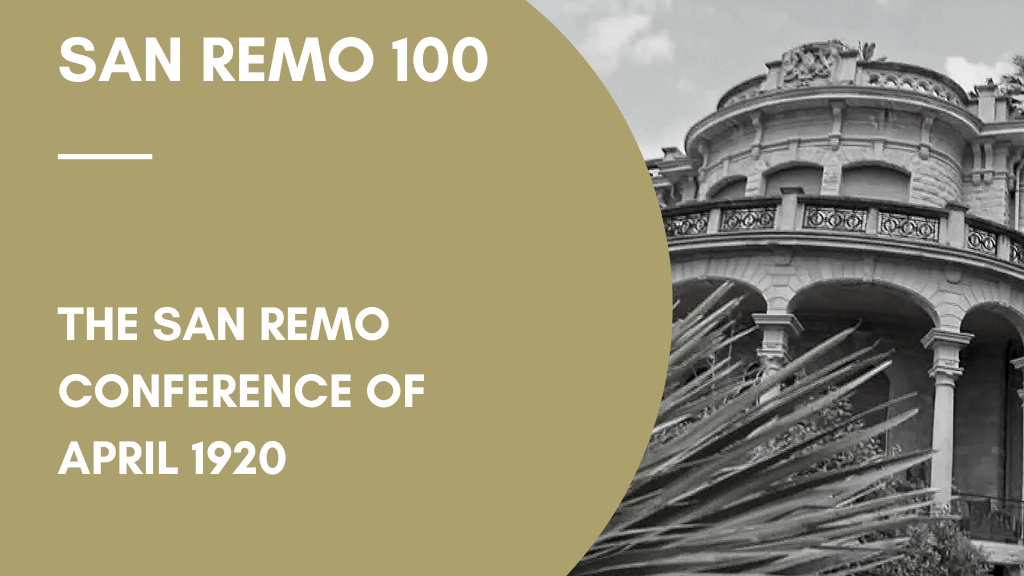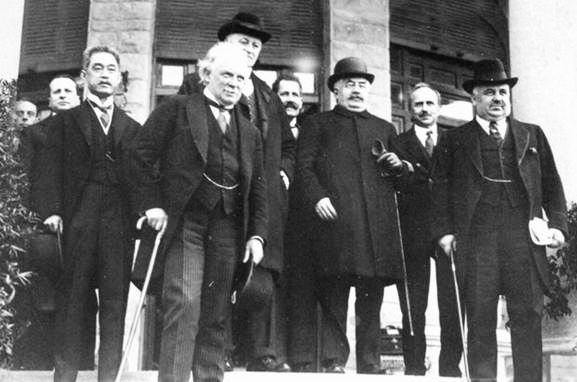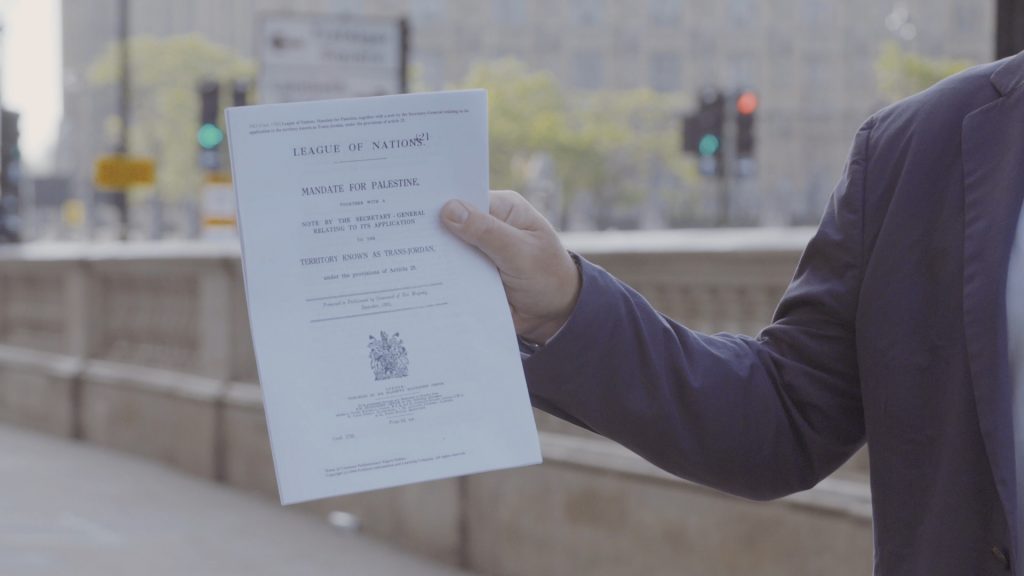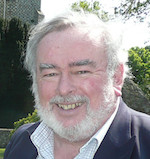The San Remo Conference of April 1920 – San Remo 100 (part 3)
The San Remo Conference commenced on 18th April 1920 at the Villa Devachan in the Italian Rivera town of San Remo. As previously mentioned, the San Remo Conference was an addendum to the 1919 Paris Peace Conference specifically to deal with the carve-up of the defeated Ottoman Empire.
The Legal and Spiritual Significance of San Remo
This little-known conference had far-reaching consequences for all the peoples of the Middle East and, not least, for the Jewish people who had been scattered across the world for two millennia. Yet for many decades its records were buried deep in the British National Archives and, along with it, its significance for the Jewish nation.
Dr Jacques Gauthier, an International Human Rights Lawyer, described this gathering of the Supreme Council of the Principal Allied Powers at the Villa Devachan thus: “It was in this place that the leaders with the power to make binding dispositions with the respect to the Ottoman territories deliberated and made the decision, having heard claims from the Zionist Organisation in Paris in 1919 during the Paris Peace Conference and having heard submissions from the Arab delegation in respect to what they wanted in the Ottoman territories. Having heard these submissions, a group of them gathered here and made final binding decisions in International Law as to who would get what.” 1
There is tremendous spiritual significance to this fact, as well as historic. The Hebrew Scriptures record that the Almighty God, whom Christians and Jews worship, gave the title deed to the Land of Israel to the descendants Abraham, Isaac and Jacob as an everlasting possession some four thousand years ago. What God did at San Remo was to enshrine that title deed into international law in the modern era. And the Lord did this knowing that a hundred years later the very legitimacy of the Jewish state in their ancient homeland would be seriously challenged.
A Plot to Torpedo San Remo
As far back as 1920 there was opposition to a Jewish National Home in Palestine – even within the British establishment. After the capture of Jerusalem by General Sir Edmund Allenby in December 1917, a British military administration was installed to govern the conquered territory. Instead of sending administrators from England, most were moved up from Cairo. At that time the British Empire was ruling over many Muslim people, and the British Army had a key role in that, and many of the military personnel who had arrived in Jerusalem were ideologically opposed to the Balfour Declaration and its implementation. In April 1920 a group of senior officers under General Bols, who was then the Military Governor of Jerusalem, inspired an Arab radical Islamist, Haj Amin Al-Husseini (later appointed as Grand Mufti of Jerusalem) to instigate a pogrom in the Old City, creating favourable conditions for him to do so. Their purpose was to try to torpedo the outcome of the San Remo Conference by showing that a Jewish National Home in Palestine was unworkable. The British government reacted by disbanding the military administration, and appointing Sir Herbert Samuel as High Commissioner. While the military plot didn’t succeed, it did create a precedent that would haunt the rest of British government over Palestine.
Before examining the San Remo Conference in more detail, we need to rewind and take a brief look at two previous policy decisions by President Woodrow Wilson of the United States that had a bearing on what happened at San Remo.
President Woodrow Wilson’s Vision of Self-Determination of Peoples
Prior to World War One, whenever a nation or an empire conquered another nation or empire, the victor generally annexed or colonised the territory of the vanquished country, and subjugated its population. Quite simply, it was ‘the law of the jungle’. Israel’s ancient history is littered with such examples. So is Great Britain’s, for better or for worse. The Sykes-Picot agreement would have seen most of the Ottoman territories annexed and/or colonised by Britain and France, with Russia getting a slice too.
There were two policy decisions that came from President Woodrow Wilson as a condition of the USA entering World War One on the side of the Allies. His first policy known as the ‘Fourteen Points’ was outlined in a speech in early 1918. He wanted to see the age of imperialism come to an end, and that the world powers should strive towards the self-determination of all peoples. As he believed that the Jewish people should have the right of self-determination too, he gave the green light to the Balfour Declaration. The second policy decision was that a League of Nations would be formed that would protect the independence of all countries no matter how big or small, and to ensure that a war like World War One should never happen again.
“Almighty God gave the title deed to the land of Israel to the descendants Abraham, Isaac and Jacob some 4,000 years ago. At San Remo, God enshrined that title deed into modern international law.”
The Covenant of the League of Nations
The League of Nations was established at the Paris Peace Conference in 1919, at the instigation of the Supreme Council of the Allied and Associated Powers. Article 20 of the Covenant of the League of Nations stated that all ‘secret agreements’ between nations – e.g. the Sykes-Picot agreement – were to be abrogated. Article 22 dealt with the setting up of a series of Mandates, for those peoples who were released from the grip of being ruled by an imperial power during World War One. These peoples (including the Arabs in the former Ottoman Empire) were to be assisted in achieving self-determination until such time as they were ready for self-government and independence. Mandates were also set up for a number of former colonies in Africa and Latin America. The Mandates, wherever they were, were to be regarded as a ‘sacred trust of civilisation’. International Lawyer Professor Avi Bell says: “What the whole institution of Mandates was a way of guaranteeing self-determination of peoples. It was really the first time that international law created and recognised this right.” 2
The San Remo Conference Establishes the Mandates
The San Remo Conference initially had three Mandates to consider: the Mandates for Syria and Mesopotamia for Arab self-determination, and Palestine. The Mandate for Palestine was unique in that the vast majority of the population for whom self-determination was intended was actually living outside Palestine at that time – namely the Jewish people – because most had been expelled from there by the Romans nearly 19 centuries earlier. When considering the Balfour Declaration of 1917, the Minutes of the conference recorded that it “had been accepted by the Allied Powers, that Palestine was in future to be the National Home of the Jews throughout the world.” 3
Dr Jacques Gauthier summarised the decisions in this way: “It was the Jewish people who were chosen to be the beneficiaries of a Trust – a Mandate – under the care of the British government in respect to Palestine. It was the Arab inhabitants of the territories of Mesopotamia – Iraq now – Syria and Lebanon that were chosen to be the beneficiaries of a trust, or a mandate.” 4
The Scope of the Jewish National Home
The Supreme Council of the Principal Allied Powers – made up of Great Britain, France, Italy (in the Chair) and Japan, with the USA observing – also discussed the territorial scope of the Jewish National Home. The leader of the British delegation was Prime Minister David Lloyd George who was influenced by his Baptist upbringing and knowledge of the Bible. Using maps prepared by George Adam Smith, he proposed that the reconstituted Jewish homeland should encompass the area that Israel resided in during the historic reigns of King David and King Solomon ‘from Dan to Beersheba’.
Referring to this fact, International Lawyer, Dr Cynthia Day Wallace states that: “In formulating legally binding instruments there was a recognition of the cultural historic roots of the Jewish people in that land.”5 Of course, this recognition most definitely included the historic Jewish heartland of Judea and Samaria that today is commonly known as ‘the West Bank’ – and within that included the historic Jewish capital, Jerusalem. So the intention of the Supreme Council was clear.
However, the final Resolution, which incorporated the Balfour Declaration almost word for word, did not finalise the actual boundaries between the various Mandates. These were to be set by the Principal Allied Powers and submitted to the Council of the League of Nations. The San Remo Resolution of 25th April 1920, which had the status of an International Treaty, received the unanimous endorsement of all the founding nations of the League of Nations.
Find out more by watching Episode 5 of ‘Whose Land?’
This article is the third in a six-part series exploring the significance of the San Remo Resolution for today. This series was first published Prophecy Today UK and published with permission.
>>Overview of this series
Reference:
1 Quoted from interview segments in the documentary “Whose Land?” – Part 1 ‘Foundations’.
2 Ibid.
3 Click here to access a full copy of the minutes.
4 See note 1.
5 See note 1.





